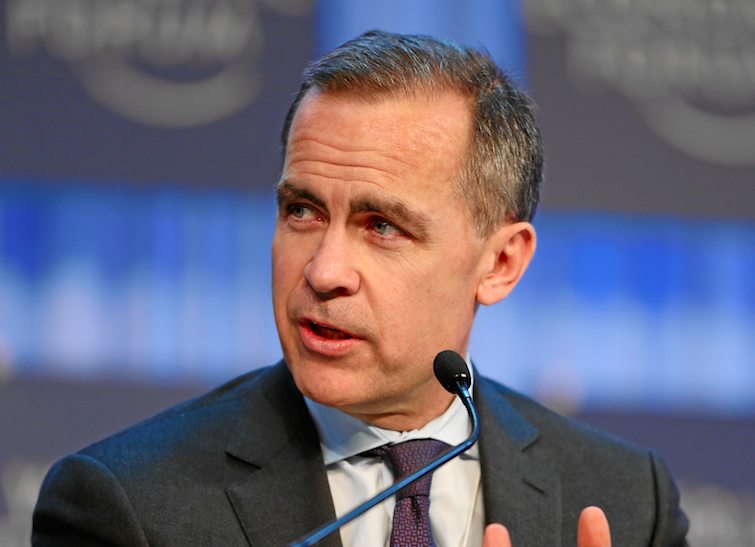Bank of England (BoE) Governor Mark Carney has already hinted in his annual speech at the Mansion House – at which important economic policies are aired to the City of London audience – that a hike may come sooner than investors expect. Most do not predict one until at least 2015 – possibly before the next UK general election which is due to be held in May of next year.
British rates have been frozen at 0.5% for more than five years. The UK economy has since emerged from the financial crisis and recession, with a growth rate that may reach 4% this year. However, the central bank dare not raise rates too high, says Cornelissen. Aside from threatening a strong economic recovery, it would also prove risky to the highly indebted UK private sector, he says.
Surprising strength of the UK economy
“The UK economy has shown surprising strength in 2014 and is now firing on almost all cylinders,” says Robeco‘s Chief Economist Léon Cornelissen in his monthly outlook. “Jobs are growing at a record pace, average house prices have risen strongly, and all UK regions have experienced growth.”
“It was therefore no surprise that Carney explicitly stated that the first rate hike could happen sooner than markets expect. This comment didn’t fall on deaf ears, so Carney found himself almost immediately forced to weaken the impact of his remarks by stressing that the ultimate decision would be data-driven.”
“Of course, central banks no longer consider it their primary task to take away the punch bowl just as the party gets going. They’ll now do their utmost to err on the side of caution and not hinder the recovery.”
The UK economy in numbers
House prices prompt bubble fears
House prices – the subject closest to most British hearts, due to high levels of home ownership – are approaching bubble territory, particularly in London. The average UK house price rose 12% in the year to June 2014, passing the 2007 peak. The BoE has been pressing for mortgage lending controls and could use a rate rise as a further bubble-bursting weapon.
“Bubble fears are understandable,” says Cornelissen. “Asset price inflation is clearly being used by central banks as a means to stimulate the wider economy into a self-sustaining recovery. But, of course, things can get out of hand.”
“The first line of defense for the BoE concerning the housing market is to introduce limits on the degree to which banks can operate in the risky sections of the mortgage market (so-called macro prudential measures). The BoE has now reintroduced a ‘corset’ for banks, but as the Economist magazine wittily remarked: “As corsets go, this is not unduly tight”.”
Cornelissen says the Taylor rule of economics – used to calculate the level of rates that will stabilize the economy in the short term but still maintain long-term growth – suggests a longer-term UK base rate of as much as 3.0%. “That’s 2.5% higher than the current rate – but then the Taylor rule is, of course, only a rule of thumb, and conditions in the world economy are far from normal.” He cited recent remarks by the BoE’s chief economist, Andy Haldane, who said: “Lots of nutty things are still happening,” justifying the bank’s extremely loose policy stance.
Cornelissen predicts that the BoE will also remain cautious on future rate hikes due to the high indebtedness of the private sector, whose debt pile is currently a hefty 163% of GDP. A rate rise would also increase the government’s own borrowing costs. He believes that 10-year yields on British gilts should rise from their present 2.75% above 3.0% before the year-end, and sterling should show continued strength versus the euro, which is damaging for UK exporters.
Scottish independence and Brexit threats
In the political sphere, Cornelissen believes a Scottish vote for independence due in September could prove damaging for the economy if Scots vote to secede from the UK. There may also be a referendum on the UK – or what remains of it – leaving the EU. British Prime Minister David Cameron has promised one in 2017 if his ruling Tory party is re-elected next May, largely to head off the growing electoral threat of the anti-EU United Kingdom Independence Party (UKIP).
“Though the going seems good in the shorter term for the UK economy, a more long-term worry is the risk of the economic impact of Scottish independence and/or of the UK leaving the EU in the coming years in the so-called Brexit,” says Cornelissen.
“As the size of the Scottish economy is relatively small compared to the rest of the UK, the economic impact of the undoubtedly messy divorce will be relatively small. But the increase in political risk could hit sterling, at least for a while.”
“If Scottish independence does materialize, it would increase the risk of the remainder of the UK leaving the EU if only because Scotland is a Labour Party stronghold.” At present, the pro-EU Labour opposition has 41 members of Parliament compared to only one for the more anti-EU Tories who lead the current British government coalition. This would leave relatively more anti-EU MPs in a future rump Parliament that excluded Scotland.
However, opinion polls suggest a majority of Scots want to remain inside the UK, while a majority of voters across the UK want to remain part of the EU, in both cases for economic reasons. “Enlightened self-interest would suggest a majority of UK voters rejecting a Brexit. We therefore attach a low probability of a Brexit in the coming years of about 20%,” Cornelissen says.

